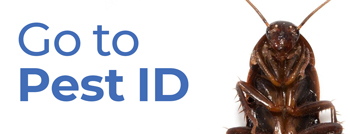Late summer and early fall mark Tucson’s mosquito season. The season coincides with our monsoon weather. The excess moisture provides breeding sites for many mosquito species.
In Arizona, we have 40 different species of mosquitoes. Some of the major species of importance include Aedes Aegypti, Culex Tarsalis, and Culex Quinquefasciatus.
The importance of these species besides the obvious transfer of vector diseases is that all three will readily reproduce near and around homes. Aedes Aegypti in particular can reproduce in very small amounts of water including flower pot bases, an old tire, cans, gutters, or any small collection of water around the home.
Diseases associated with these species include Encephalitis, Yellow Fever, Dengue Fever, and West Nile Virus. Mosquitoes can also be a threat to pets. Dogs often can contract heartworm, a disease that impacts your pet's circulatory system.
Disease transmission and breeding habits are part of the Mosquito’s life process. Mosquitoes go through complete metamorphosis similar to a butterfly. The difference is that water is a key element in the life cycle. Eggs are laid in water, on the sides of containers, or in damp soils depending upon the species. The eggs hatch and larvae emerge living in the water feeding upon microorganisms or decaying matter. The larvae will pupate at the water surface utilizing a respiratory trumpet to breathe air. The final stage is the emergence of a mosquito.
Adult mosquitoes have a piercing, sucking mouth part, basically a needle-like mouth designed to pierce the skin and suck blood from people and animals. This is the key element in disease transmission. Mosquitoes can transmit disease during the blood meal feeding.
Tucson Mosquito Control
The best defense for homeowners is to try to limit mosquito populations. There are many common remedies like the use of citronella candles or insect repellents like DEET. The best remedy is to eliminate all water breeding sites. A simple walk around after storms or watering your plants to reduce water sources is ideal. Suggestions include removing containers that can trap water, emptying water trays beneath pots, and flushing out desirable water sources like bird baths or fountains.
Often these practices need to be community-oriented since mosquitoes can travel significant distances. In some instances, water sources can’t be drained such as drainage ponds. In these situations, larvicides can be introduced to the surface water preventing mosquito development. In addition, insecticidal applications can be used to knock down large adult populations.
If you have a mosquito problem Essential Pest Management can help. Call for an inspection and we can provide a solution. (520) 886-3029.



